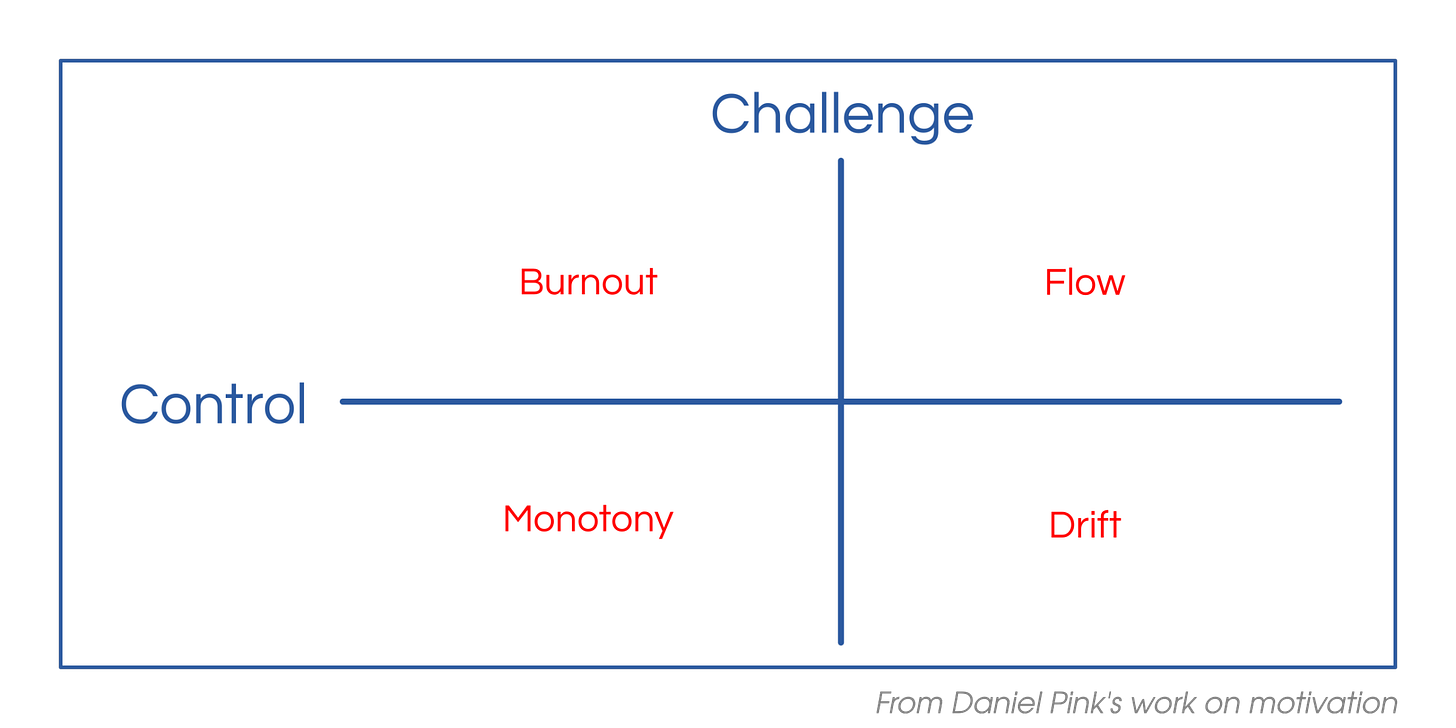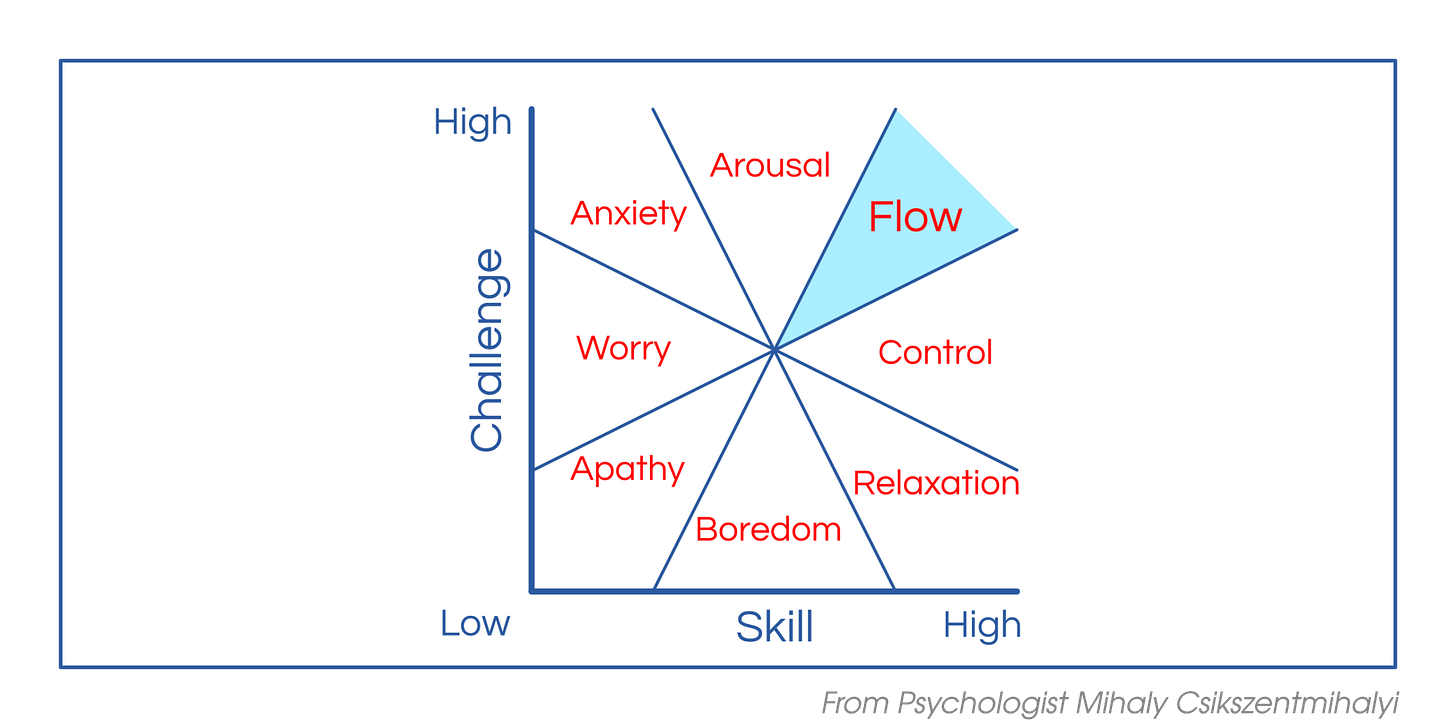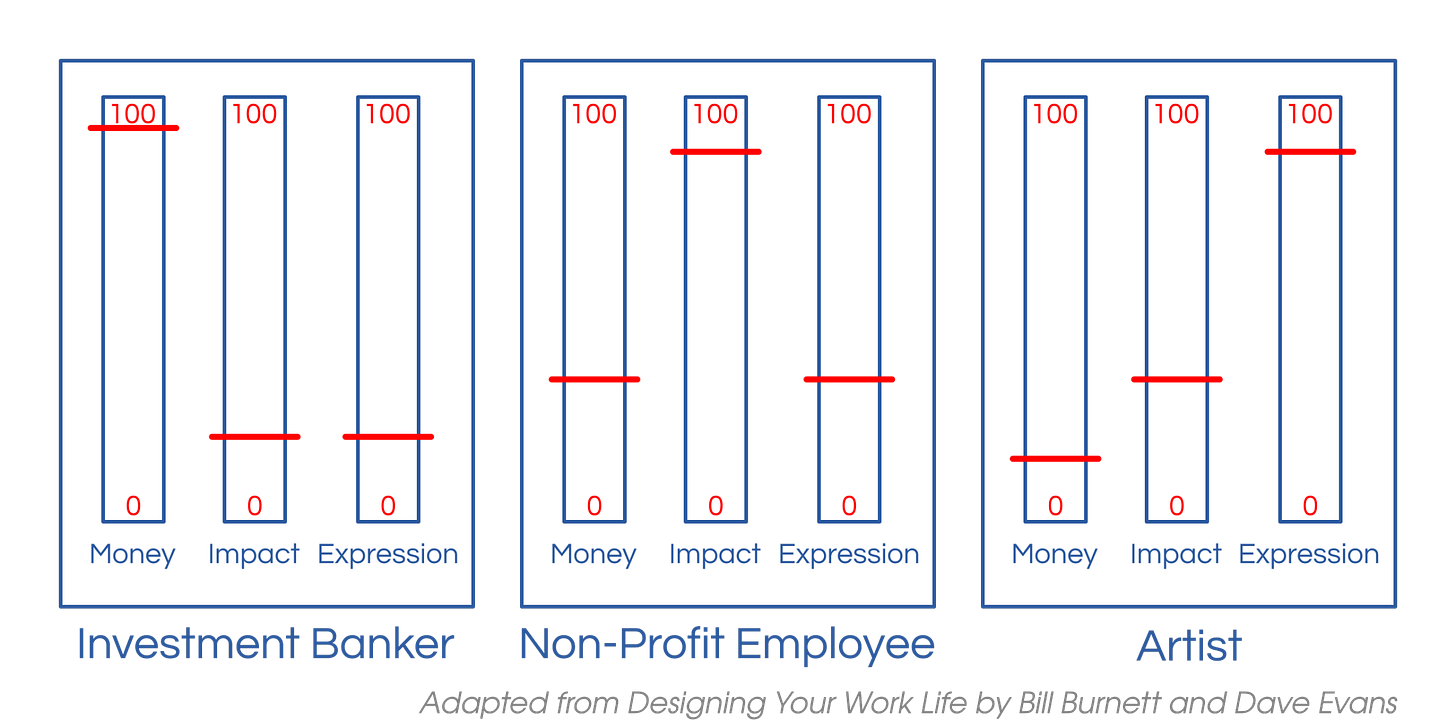Career mapping in the age of constant change
(Originally published on LinkedIn, March 16, 2022.)
You’ve no doubt experienced the impacts of the Great Resignation. Several colleagues have likely left your organization in recent months, maybe you are thinking of leaving as well. The pandemic has given people the headspace to think more deeply about their lives. Where are we going with our careers? What skills do we need? What are we good at? There are many questions to answer.
A few decades back, it was commonplace to have the same job throughout one's life. Not only was this a societal norm, there was much less knowledge available about other careers. Knowledge in the past was guarded by those who had access to it; now anyone with an internet connection has access to more knowledge and information than many experts of the previous generations. If you’re interested in having multiple careers, now’s a great time! That said, changing careers is much easier for those with the resources and means to do so. But read on, for ideas that might help anyone looking to think about alternate career paths.
Are you a rockstar or a superstar?
Let’s begin by exploring career trajectories in the modern knowledge economy. They often take two forms. Figure 1 is an example of someone finding their calling early and moving up the ladder with each new role in a given field. You can also call these type of people the “rockstars,” a term Kim Scott in Radical Candor uses – rockstars are experts in their field, or specialists. I must say I am envious of those who have found their calling and have built on their strengths in one domain. For many, you might fall into Figure 2, which has a lot of loops and setbacks, but ultimately can lead you to where you want to be. These types of people are the “superstars” per Kim Scott – they have different passions and like trying out different jobs and careers. The world needs both rockstars and superstars, so it is a matter of finding out what interests you most. Also, you might not want to climb the career ladder; and that's fine too!
Figure 1: Rockstar Career Figure 2: Superstar Career
How to make choices for the long term
The clichéd term of “your career is a journey, not a destination” is true. We need to think of our careers long term. There are so many skills I have acquired that I didn’t know I was good at and others I thought I would like but did not in practice. Annie Duke talks about the 10-10-10 framework when making a big decision. We can use the same framework when making a career decision. How will you feel with the decision 10 minutes from now, 10 months from now and 10 years from now? When making hard decisions or moves, it might be painful and difficult for you in the short term but if you think it will take you where you want to go 10 years from now, then probably you have made the right choice.
That said, your vision of a certain career might be completely different from the reality as you might have painted a wrong image in your head. To counter this, I recommend talking to as many people as you can about a certain path to learn if that career is right for you. Try to understand from them about how the organization is in reality and not the buzzy branding that you will usually find on the internet. Glassdoor is a great platform to find out more about the organization. One might argue that only those who dislike the organization or love it a lot will usually review the organization on Glassdoor. The actual truth of what the company is like is probably something in between. Use it as one lens of many to look at the organization. At the end of the day, you need to ask yourself, while keeping in mind that no job or career is perfect: Will you enjoy doing what others in the company are doing day in and day out?
As you try to reach your goals, enjoy the journey. It will probably shift and change and maybe you will find something completely different than what you set out to do. Be open to change and have a growth mindset.
Finding flow
So how does one find a perfect career? Daniel Pink, speaker of a famous TED talk on career and author of many books, talks about how we work best when we have autonomy and mastery. In his recent LinkedIn course on motivation, he puts our careers in four quadrants as shown in Figure 3.
Figure 3
Pink says that we perform our best when we have control of our jobs and find it challenging at the same time. We are in the top right quadrant and are in FLOW. If our jobs are challenging but we don’t have a lot of control we might hover into BURNOUT. If we have control but the job is not challenging, you might hover into DRIFT. The worst is where you neither have control nor challenge, which leads to MONOTONY. It’s hard to be in flow mode all the time and there will be aspects of your work that will hover around all the quadrants but one should try to work with your manager to carve a position where you have the most flow.
We can expand further into the topic of FLOW through psychologist Mihaly Csikszentmihalyi’s work, which focuses on how we can use challenge and skill to achieve flow. If you have a challenging project in which you are highly skilled, you will be in a state of flow. When we are over ambitious, the work might be challenging but we might not be as skilled in an area, which leads to ANXIETY. Explore Figure 4 below to see where you stand with your current projects and work.
Figure 4
Finding work you want to do
Then comes the question of what work do you want to do? Bill Burnett and Dave Evans in their book Designing Your Work Life explain how everyone works for Money, Impact and Expression at different levels. Your focus on each of these three levers will vary by who you are and the point in time in your life. One has to figure out what combination works best for them.
Let’s look at a few examples in Figure 5 of how the three levers are calibrated for different job profiles of an investment banker, a non-profit employee, and an artist. If a non-profit employee is dissatisfied because they are not getting paid like a newly minted investment banker, then their lever and perhaps career is not calibrated properly: one works at a non-profit mostly for its impact and not for the money. Similarly, as an artist your sense of expression is probably very high; money and impact not so much. If you have the levers calibrated properly and are conscious about it, you can substantially reduce your source of unhappiness at work.
Figure 5
Multiple ways to measure impact
Money and expression are easy to measure but what about impact? In my opinion every job has some sort of impact but how can it be measured? I suggest looking at it from three angles.
Is the job internally or externally focused? Within a large organization some departments are internally focused, like IT, HR, and Accounting. Some are a combination of internal and external like marketing and communications, and some are externally focused like the Corporate Innovation Arm or Business Development. Figure out what kind of roles you prosper in. You can create an additional lever for how internally and externally focused the job is like shown in Figure 6.
Figure 6
2. Is the unit where you’ll be working the cost or revenue making center? For example, when you are an accounting specialist working for one of the top auditing firms like KPMG or PWC you are generating revenue for the company; however, if you switch to a corporation like Microsoft whose bread and butter is not accounting, you fall out of the cost making center. Figure out from the level below where you stand in the spectrum.
Figure 7
3. Burnett and Evans talk about how your point of impact can be far (global) or near (personal), and the type of impact of your work can be focused on what is new or what needs to be renewed (repaired).
Let’s look at a few examples as shown in Figure 8 below:
Figure 8
As a startup founder of an innovative healthcare company that helps with curing cancer, you fall in the quadrant of creating something new, and your point of impact is global as the startup may impact thousands of lives if successful.
As a Product Manager working on a new feature in WhatsApp, you can affect billions of lives with a single tweak of a feature. You fall in the category of New/Far.
As a professor at a university if you are creating a new digital marketing course, you are impacting probably 50 students at a time, so you fall in the category of New/Near.
As a general physician you are not creating anything new and working with one patient at a time, so you might fall in the category of Renew/Near.
A program manager at the Work Bank’s headquarters in Washington, DC who is working on an education project in Bangladesh. You are managing the program from afar but there are lots of resources working with you on the ground in Bangladesh to implement the project. Your role is at a high level making sure the millions of dollars being disbursed are being used properly, which falls into renew. Here, you fall in the category of Renew/Far.
Every role can be mapped in these 4 quadrants and your job can traverse many of these quadrants at a time. Try to figure out what kind of impact works for you.
When you choose a career path, remember you are saying no to many other things. In addition, what might work today, might not work for you in the future. Be judicious and conscious about your career path taking into consideration your finances and personal circumstances. I would recommend trying out many things when you are younger to see what works best for you. Small conscious changes will ultimately lead to your goal.
In Summary:
1. Figure out if you work best as a rockstar (specialist) or a superstar (generalist).
2. Use tools like the 10-10-10 framework and Glassdoor and talk to people in the field to think long term and find roles that fit.
3. Aim for a job that has challenge and control, i.e. that puts you in flow state.
4. Calibrate your money, impact, and expression levers with the type of field you choose.
5. Determine how you want to measure your impact through the angles of internal/external focus, revenue generation, and point and type of impact (global/near and new/renew).
The beauty of career mapping in the modern age is that there is no one right answer. None of the quadrants or levels are necessarily good or bad. Figure out what works best for you – it’s your career and no one else’s.
In closing, let’s remind ourselves that career is only one dimension of our multi-dimensional lives. Health, family, friends, hobbies…there are so many things to live a fulfilled life. It’s your individual journey and best to not be bothered by what others are doing and to compare yourself. We need to define what success means to each of us personally. Happy career mapping!









